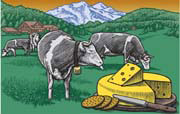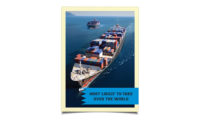
The Golden State's dairy industry, is the largest in the country, and generated $47.3 billion in economic activity in 2002 in wages, revenues and related expenditures, according to a comprehensive study commissioned by the CMAB. Within California, the study reported that the state's dairy industry generated 257,800 full-time equivalent jobs and had an economic impact of $35.1 billion.
The study, conducted by J/D/G Consulting Inc., Chicago, identifies California's 2,100 dairy farms as the nucleus of a vast and growing industry comprising dairy farms and their suppliers, dairy processors and manufacturers, dairy products wholesalers and retailers, and foodservice suppliers. Last year, California produced 20% of the nation's milk and cheese. This share is projected to increase to as much as 30% within a decade, according to the CMAB.
But some say the growth will be hard to sustain in light of competition from other western states that have begun to grow their dairy industries.
Michael Marsh, CEO of Western United Dairymen in Modesto, Calif., told the Sacramento Bee newspaper many dairy processors feel their business future "remains a little uncertain."
The costs of health insurance, workers' compensation and environmental regulations unique to California make the state seem like a less and less attractive place to do business, said Marsh, adding that California farmers actively are recruited to lower-cost states. At the same time, retail consolidation is forcing processors and farmers to expand, creating uncertainty for smaller players.
Twenty years ago, California took steps to increase cheese production and promotion, a decision that has over the years paid off by moving the state toward the front of a growth market. More than 40% of the state's milk is sold outside California, mainly in the form of cheese, butter and skim milk powder. With several new major cheese plants coming on line, more growth is expected from a processing standpoint. In fact, the CMAB study predicts that in the next decade the state's milk production will grow by 31% and cheese production will grow by 48%.
Even before that, the growth is expected to propel California from the second largest into the top spot in cheese production.
Meanwhile, in the state that calls itself "America's Dairyland," California's boast of becoming the nation's top cheese maker by 2005 have gone over like a bad Limburger. Keep in mind, Wisconsinites chose a dairy cow and cheese to be pictured on the state's commemorative quarter.
"California can talk all it wants about quantity, but can they talk about quality?" asked Bob Weinfurter, whose Wisconsin-based family owns the Rybicki Cheese company.
Last year, Wisconsin was still America's big cheese, producing 2.2 billion pounds, the most of any other state, with California second at 1.7 billion pounds, according to the most recent statistics from the U.S. Department of Agriculture.
Sidebar
Economic Impact of the California Dairy Business
California Economic Impact: $35.1 billion
Out-of-Sate Economic Impact: $12.1 billion
Total: $47.3 billion
Impact By Industry Sector:
Milk Producers: $9.14 billion
Figure includes milk sales, livestock sales, wages on and off the farm, taxes and business and capital expenditures.
Milk Processors: $14.16 billion
Figure includes total value of shipments, manufacturing expenses, capital expenditures, in-plant and out-of-plant wages, and taxes.
Wholesale/Retail/Foodservice In-State Sales: $11.8 billion
